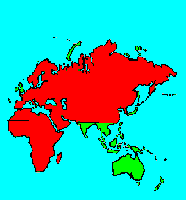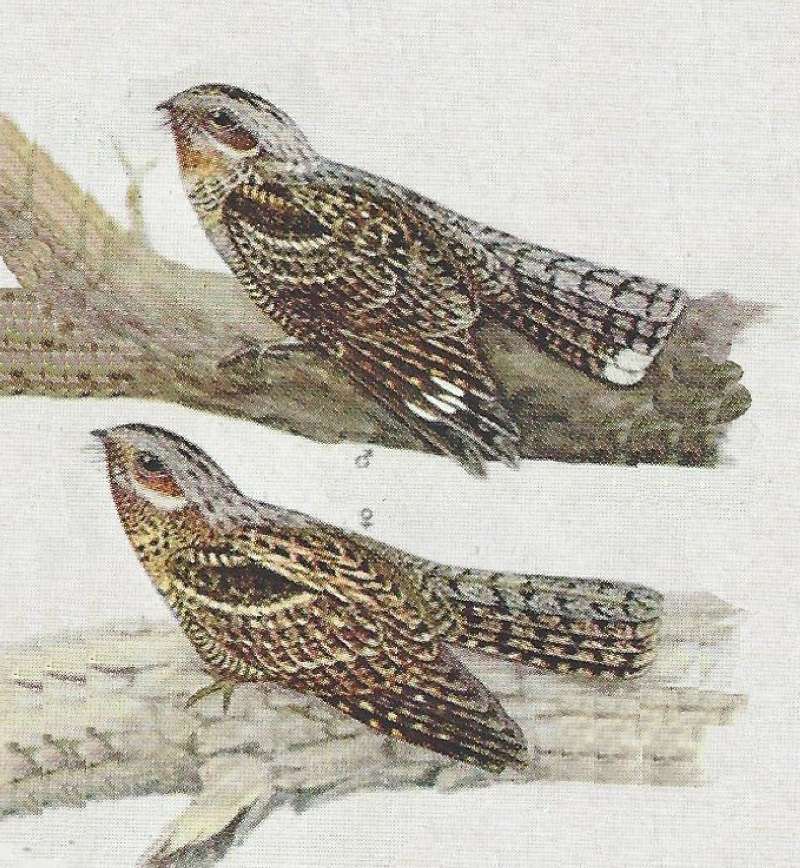SPECIES INFO
European nightjar or goatsucker (Caprimulgus europaeus) is found widely in Europe and east into central Asia. This is found in northern and Central China. This also breeds in northwestern India and also Iran. This also migrates to Africa. This 10 inch plus nightjar flies primarily in the early evening and the night. This is a brown bird with a complicated pale pattern of spots and lines giving a mottled appearance. The breeding pattern is unusual in that the young leave the ground based nest within a few days and begin foraging like young chickens. The young can fly in a little over two weeks.
There are about 6 recognized subspecies. The nominate subspecies, Caprimulgus europaeus europaeus, is found from central and northern Europe to Siberia and migrating to Africa. The subspecies meridionalis found in southern Europe and northern Africa and east to the Caucasus migrating to Africa. The subspecies sarundnyi is found in western Siberia and central Asia. The subspecies unwini is found from Iraq east to India and China. The subspecies plumipes is found from China into Mongolia. The subspecies demetievi is found in northern Mongolia. It appears that at least some of all these subspecies migrate to Africa.The Eurasian, African, and New World Nightjars subfamily (Caprimulginae) contains 72 species spread among the genera Veles(1), Nyctidromus(1), Phalaenoptilus(1), Siphonorhis(2), Nyctiphrynus(4), Caprimulgus(55), Macrodipteryx(2), Hydropsalis(2), Urosopalis(2), Macropsalis(1), and Eleothreptus(1).
Nightjars (Family Caprimulgidae) is a worldwide family of about
67 different species. Included in this family are the familiar nighthawks and Whip-Poor-Will.
Nightjars and Goatsuckers (Order Caprimulgiformes) are an order of about 120 species of birds that are found worldwide. Included in this order are the families of Oilbirds, Frogmouths, Potoos, Owlet-Nightjars, and Nightjars. Clements counts 28 species in three smaller families and 91 species in the nightjar family.
Aves contains about 8,650 different species of living birds known to science. Each year about one new species is discovered in some remote rain forest or remote island. In addition, scientists have been raising many subspecies to full species status which may raise the species count to 10,000. Birdlife recognizes 10,027 species as of 2011.
However, each year about one species goes extinct. The rate of extinction is increasing, and the rate of new discovery is decreasing, so that the number of bird species will soon begin to decline rapidly. Although different taxonomists would organize the birds differently, there are approximately twenty-seven orders of birds. These orders are broken down into about one hundred and fifty-five different families.
Recent research of the genetic structure of some of the shore birds and owls would indicate that the present organization of orders and families should have some modification.
The birds are a worldwide group of animals that are characterized by having the front limbs modified into wings that are used for flying. Perhaps the most unique feature of the birds is the feathers. These feathers are made up of a central support called a quill and a series of small filaments that are hooked together as barbs.
For many years it was believed that Archaeopteryx discovered in Bavaria was the oldest bird from about 150 million years ago. However, in l986, Sankar Chattterjee, a Texas paleontologist, reportedly discovered a bird in the genus Protoavis that lived about 225 million years ago.
When this project was begun in 1978, we used Austin & Singer for bird taxonomy. Since then, we have adopted many changes, but have kept some older concepts that are still found widely in the literature. Recently, we have used Clements and Howard & Moore. Very recently, we have used Monroe and Sibley for the higher taxonomy of the perching birds.
Backboned Animals (Phylum Chordata) are the most advanced group of animals on earth. These animals are characterized by having a spinal cord or backbone. Most members have a clearly defined brain that controls the organism through a spinal cord. Fish, amphibians, reptiles, birds, and mammals are in this phylum.
Currently, some taxonomists believe that the fish should be divided into two groups (sharks and regular fishes) and that there are some other primitive groups in the phylum such as hagfish or lampreys.
Animal Kingdom contains numerous organisms that feed on other animals or plants. Included in the animal kingdom are the lower marine invertebrates such as sponges and corals, the jointed legged animals such as insects and spiders, and the backboned animals such as fish, amphibians, reptiles, birds, and mammals.




